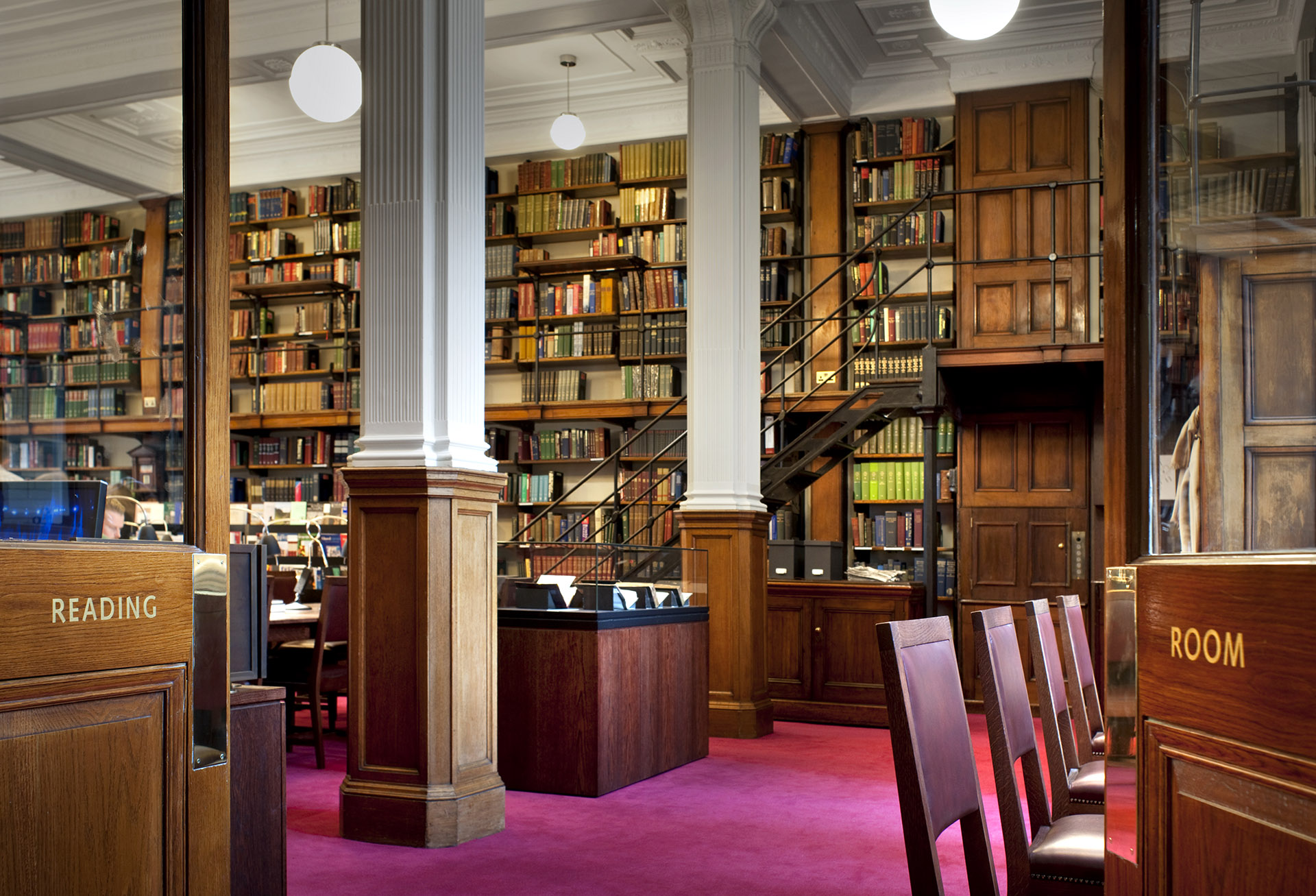“New Foundations” - The Strategic Plan for The London Library 2018/19 - 2022/23
The London Library plays an important role in the cultural life of the nation and aspires to play a much bigger one.
Founded to share knowledge and to inspire the creation of new ideas, the impact of the Library over 177 years has been substantial. It has inspired and supported writers, thinkers, scholars and artists in the creation of some of the world’s most famous books, scripts and ideas that have, in turn, touched the lives of many millions, shaping the intellectual history of the nation and the world. Just as importantly, the Library has facilitated the personal creativity and intellectual journeys of many tens of thousands of individuals who have enjoyed the collection and the spaces to study within the Library.
But despite its wonderful collection, premises and membership, past and present, the Library remains relatively unknown – a “hidden treasure”. Its lack of profile combined with steadily declining use of the Library, limits its potential impact, and, if not rectified, will lead it towards an increasingly insular and isolated future. Furthermore, even the Library’s current position is at risk as the Library’s finances are currently unsustainable.
The purpose of the strategy is therefore simultaneously to expand the Library’s reach and impact, while restoring its finances to balance, creating “new foundations” for the future. The task is difficult, but we believe it is achievable with a major effort by the staff, trustees and other supporters.
The following briefly outlines our strategic plan. It sets out the overall direction and some of the actions we will take to achieve our goals.
Our key goals are to:
A. Substantially increase awareness of, access to and engagement with the Library (increasing its reach and impact)
B. Remove the annual operating deficit by the end of 2022/23 (placing the Library on a sustainable financial footing for future generations)
In order to achieve our goals, we will:
1) Raise our public profile (with external PR support) and create targeted marketing and communications campaigns to drive increased awareness, use and membership of the Library. We will give an additional focus to attracting and welcoming younger people to the Library.
2) Create new ways to access and engage with the Library including:
- a high quality programme of events and outreach activity at the Library and other venues such as at literary festivals or partner venues (which will also contribute to achieving increased awareness of the Library);
- new ways to join or use the Library aimed at less frequent visitors and those for whom the membership fees are a major obstacle.
3) Deliver new spaces at the Library to accommodate:
- our growing programme of events, outreach activity and private venue hire
- more reader spaces (necessary as use of the Library grows)
- comfortable, catered spaces where members can meet, share ideas and work in a less formal environment.
4) Find a new model for our library collection that allows for continued acquisition and maintains the accessibility and usefulness of the collection, while working within the twin constraints of available storage space and cost. We shall need to explore potential solutions such as: the movement of some of the collection to off-site storage; the increased collection of digital versus hard-copy items; and the removal of duplicate content. We shall need to focus our on-site and digital collection resources on the content that will be most beneficial to existing and future users.
5) Increase our revenue fundraising (i.e. expanding our Founders’ Circle, creating an Annual Fund, delivering fundraising events), making fundraising a bigger proportion of our overall income
6) Launch a major appeal to “re-found” the Library, consisting of an immediate capital fundraising campaign to finance the creation of new spaces, and a longer-term campaign to deliver a substantial endowment for the Library (returns on which will help support Library operations)
7) Develop new ways to increase our income from other sources, such as private venue hire (which will also support an increased awareness and use of the Library)
8) Restrict cost increases, finding more ways to work more efficiently and seeking to minimise the impact on members.
Our target is to increase our membership from 6,500 to 8,500 over 5 years and for the combined effect of increased membership income, revenue fundraising, other income streams and the restriction on cost increases, to deliver a balanced operating budget by 2022/23.
The full 5 years will be needed to achieve our aims. However, some initial changes have already begun: we have started a successful programme of evening events (creating new partnerships with Bloomsbury and others); scored a PR hit with our Bram Stoker discovery; partnered with the Henley Literary Festival; increased the upper age limit for half price Young Persons Membership (from 24 to 26); and added two young members as “Trustee Placements” on our Board.
We have carried out detailed research into the potential for new models of membership and an initial feasibility study relating to developing new spaces within the building. We are making good progress with revenue fundraising (up against budget) and we will change our evening opening hours from the start of January to allow greater capacity for more venue hire sales and our growing events programme. We have restricted our cost increases in 2017/18 and continue to do so in 2018/19.
We have only just started a challenging journey, but the end result - The London Library fulfilling its potential at the centre of the UK’s cultural landscape, benefiting many more users and standing on a firm financial footing - will be a wonderful reward.


